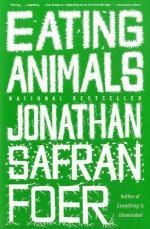
|
| Name: _________________________ | Period: ___________________ |
This test consists of 5 multiple choice questions, 5 short answer questions, and 10 short essay questions.
Multiple Choice Questions
1. On what day did the author's grandmother's family bake bread each week?
(a) Wednesdays.
(b) Tuesdays.
(c) Mondays.
(d) Thursdays.
2. To what topic does the author compare that of eating animals in "Eating Animals"?
(a) Politics.
(b) Music.
(c) Religion.
(d) Abortion.
3. Where is the kosher slaughterhouse Agriprocessors located?
(a) Hart, Idaho.
(b) Postville, Iowa.
(c) Coleman, Nebraska.
(d) Evansville, Indiana.
4. According to the UN, the livestock sector is responsible for what percent of greenhouse gas emissions?
(a) 42%.
(b) 18%.
(c) 9%.
(d) 76%.
5. What did the author's grandmother's family have every Friday to eat?
(a) Pancakes.
(b) Ice cream sundaes.
(c) Mashed potatoes.
(d) Muffins.
Short Answer Questions
1. Approximately when were chickens domesticated?
2. On what day of the week does the author claim he became a dog person?
3. What one recipe does the author describe his grandmother making when he grew up?
4. By what title does the author refer to his grandmother?
5. When was the polar bear Knut born?
Short Essay Questions
1. How have chicken and egg production changed since the 1930s?
2. What does "Kosher" mean and how has this affected the author's diet?
3. What is bycatch and what are the environmental ramifications of bycatch?
4. How does the author define "cruelty" in the text?
5. What is a downer? How does the author describe downers in the industrial farming industry?
6. How does the author define animals in "Animal"?
7. Why does the author cite Franz Kafka in "Shame"?
8. What is Farm Sanctuary and what is its mission?
9. What aspect of fellowship does the author challenge as offered by Michael Pollan?
10. What are broiler chickens and why does the author assert they are lucky in comparison to laying hens?
|
This section contains 668 words (approx. 3 pages at 300 words per page) |

|




